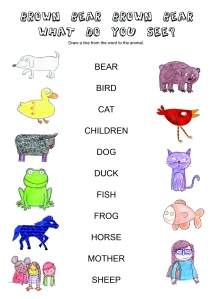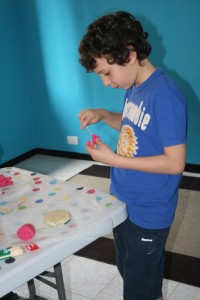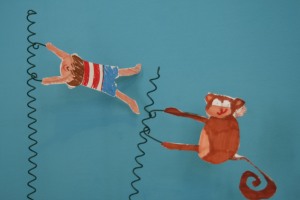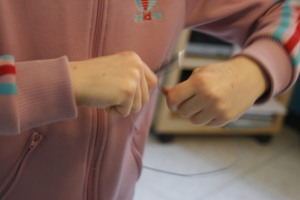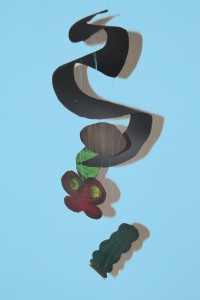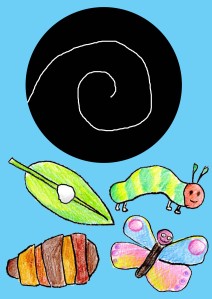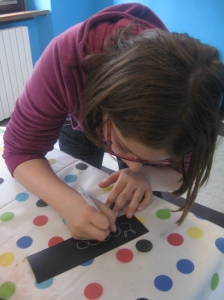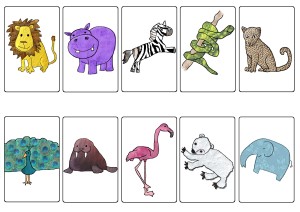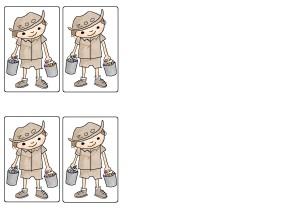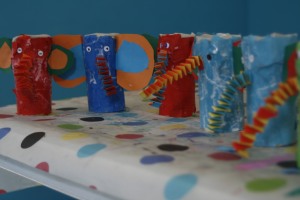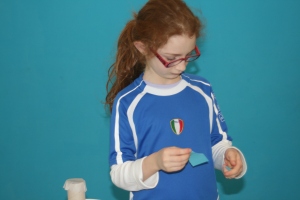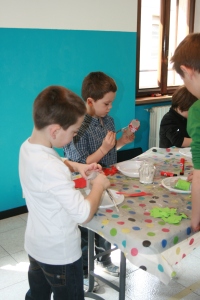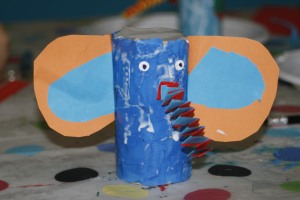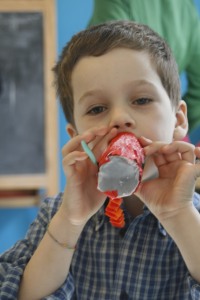Per leggere questo post in italiano, cliccate qui.
Father’s Day is the 19th of March in Italy, so the kids made a special present for their dads – a totally killer quilled key chain.
What’s quilling you ask? It’s taking strips of paper and curling them into spirals, you bend those spirals into different shapes and put them together to form an animal, a flower or whatever you want. Check out Inna’s Creations for some basics on quilling and other great ideas.
Here’s how to quill a fish key chain:
Supplies:
- colored paper (A4)
- ruler
- pencil
- wooden skewer
- elmer’s glue
- Modge Podge or watered down elmer’s glue
- old paintbrush
- needle (a big one)
- embroidery thread
- key chain ring
You probably have most of the things in the house, so this is a great impromptu activity – like on a rainy day, when you’re stuck inside and you don’t know what to do!
1. Use your ruler and pencil to measure out 4, 1 cm strips along the length of the paper. Carefully cut them out.
 2. Take two strips and glue them together at the ends, so you have one long strip.
2. Take two strips and glue them together at the ends, so you have one long strip.
3: Fold one strip in half and cut it along the fold.
4. There should be 4 strips total, 1 long, 1 medium and 2 short. Take a short strip of paper and twirl it around the skewer and then take it off. You should have a spiral. Do the same to each of the other strips.

5. Put a dot of glue on the end of each spiral and glue it closed.
6 Now comes the tricky part – you will need to make pinch and bend the pieces to make different shapes which will form the parts of the fish.
 7. Take the large spiral and pinch the ends to form an ‘eye’ shape -this will be used for the fish’s body.
7. Take the large spiral and pinch the ends to form an ‘eye’ shape -this will be used for the fish’s body.

8. Use your index finger and your thumb of your left hand and the index finger of your right hand to squish the two small spirals into triangles. These will be the fins.
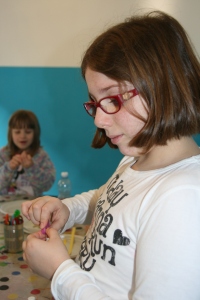 9. Use the thumb and index fingers of both hands to squash the last spiral (the medium sized one) into a crescent moon shape.This will be the tail.
9. Use the thumb and index fingers of both hands to squash the last spiral (the medium sized one) into a crescent moon shape.This will be the tail.
10. Pass the needle with embroidery thread through one side of the eye shaped piece, make a loop and tie a knot.
11. Glue each of the pieces together to form a fish. Let these dry.
12. When you are finished, use the paint brush to pass Modge Podge all over the fish – on the top and the bottom and the sides. This will make the fish harder. When it dries, hook the fish onto a key chain ring and you are finished!
When it dries, wrap it up and give it to your dad on Monday. Make sure you wish your dad a Happy Father’s Day from all of us at ARTiculation360.

